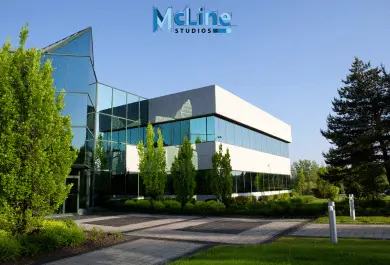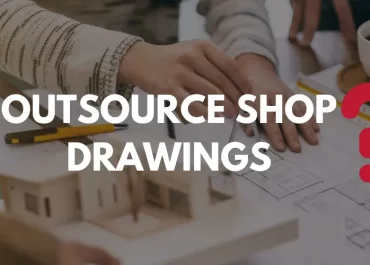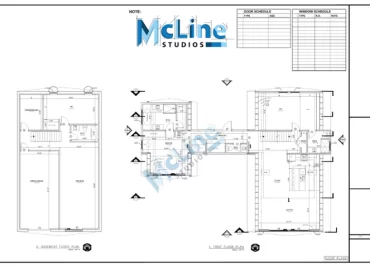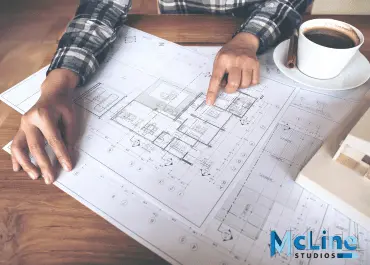Architectural visualization is the art of creating imagery that depicts proposed architectural designs. These visual representations allow architects, designers, and clients to preview and evaluate the aesthetics, functionality, and overall vision of a construction project before it is built.
Architectural visualization utilizes various techniques such as 3D modeling, rendering, and post-production to generate photorealistic or stylized images, animations, and virtual reality experiences. These visualizations aid in the design process, facilitate communication between stakeholders and serve as powerful marketing tools.
The field of architectural visualization has evolved rapidly with advancements in computer graphics technology, enabling architects and designers to bring their concepts to life with exceptional detail and accuracy.
As a crucial aspect of the architectural and construction industries, visualization plays a pivotal role in translating ideas into tangible, visually compelling representations.
How Architectural Visualization Works?
Architectural visualization is the process of creating digital representations of architectural designs. It involves the use of various software tools and techniques to generate realistic images or animations that depict how a building or space will look once constructed.

Here’s a basic overview of how architectural visualization works:
- Initial Design: The process begins with the architect or designer creating the initial design of the building or space using traditional methods or computer-aided design (CAD) software.
- 3D Modeling: Once the design is finalized, it’s translated into a 3D model using specialized software such as Autodesk Revit, SketchUp, or 3ds Max. This involves creating digital representations of the building’s structure, interior, and exterior elements.
- Texturing: After the basic 3D model is created, textures are applied to surfaces to give them realistic appearances. Textures can include materials like wood, concrete, glass, or metal.
- Lighting: Lighting plays a crucial role in architectural visualization as it affects the mood and atmosphere of the scene. Virtual lights are placed within the 3D environment to simulate natural or artificial lighting conditions. Techniques such as global illumination and ambient occlusion may also be used to enhance realism.
- Rendering: Rendering is the process of generating 2D images or animations from the 3D scene. This involves calculating the interaction of light with surfaces, shadows, reflections, and other visual effects. Rendering can be done using software such as V-Ray, Corona Renderer, or Unreal Engine.
- Post-Processing: Once the initial render is complete, post-processing techniques are applied to enhance the final output. This may include adjustments to color balance, contrast, brightness, and adding effects like depth of field or lens flares. Software like Adobe Photoshop or After Effects is commonly used for post-processing.
- Review and Feedback: The rendered images or animations are then reviewed by the architect, client, or stakeholders to provide feedback and make any necessary revisions to the design or visualizations.
- Final Presentation: Once approved, the final architectural visualizations are presented to clients, investors, or the public to communicate the design intent and showcase the project before construction begins.
Throughout this process, communication between architects, designers, and visualization artists is essential to ensure that the final visualizations accurately represent the design vision and meet the project requirements.
Applications Of Architectural Visualization
Architectural visualization has a wide range of applications across various industries:
- Architecture and Real Estate: Perhaps the most obvious application is in the architecture and real estate industries. Architectural visualization helps architects, developers, and real estate agents showcase their designs and properties to clients and investors before they are built. This can include everything from residential homes to commercial buildings and urban developments.
- Interior Design: Interior designers use visualization to showcase their designs to clients, allowing them to see how furniture, decor, and layout will look in a space before any physical changes are made.
- Urban Planning and Development: City planners and developers use architectural visualization to model and visualize entire urban areas, including infrastructure, transportation systems, and public spaces. This helps stakeholders understand the potential impact of proposed developments on the surrounding environment.
- Marketing and Advertising: Visualizations are often used in marketing and advertising campaigns to promote new developments, buildings, or spaces. High-quality renderings and animations can help attract potential buyers or tenants.
- Historical Reconstruction: Architectural visualization can also be used to recreate historical buildings and sites, allowing historians and archaeologists to study and preserve cultural heritage.
- Virtual Reality (VR) and Augmented Reality (AR): The VR and AR technologies and architectural visualization can be experienced in immersive virtual environments, allowing users to interact with and explore designs in a more immersive way.

The Final Thoughts
In conclusion, architectural visualization has become an essential tool for architects, designers, and developers in bringing their creative visions to life. With the help of advanced 3D modeling, rendering, and animation technologies, architectural visualization allows for a realistic and immersive representation of proposed building projects before a single brick is laid.
This powerful technique not only aids in the design process but also serves as a valuable communication tool, enabling architects to effectively convey their ideas to clients, stakeholders, and the general public.
Through photorealistic renderings and captivating animations, architectural visualization bridges the gap between concept and reality, allowing for a deeper understanding and appreciation of the intended design.




